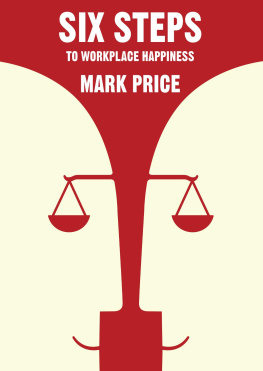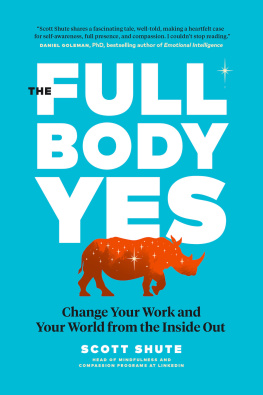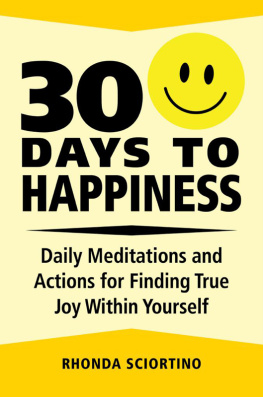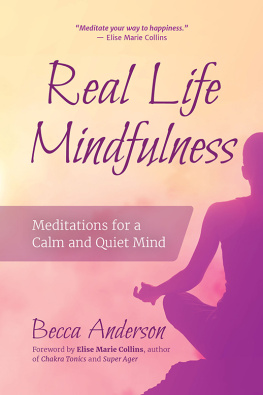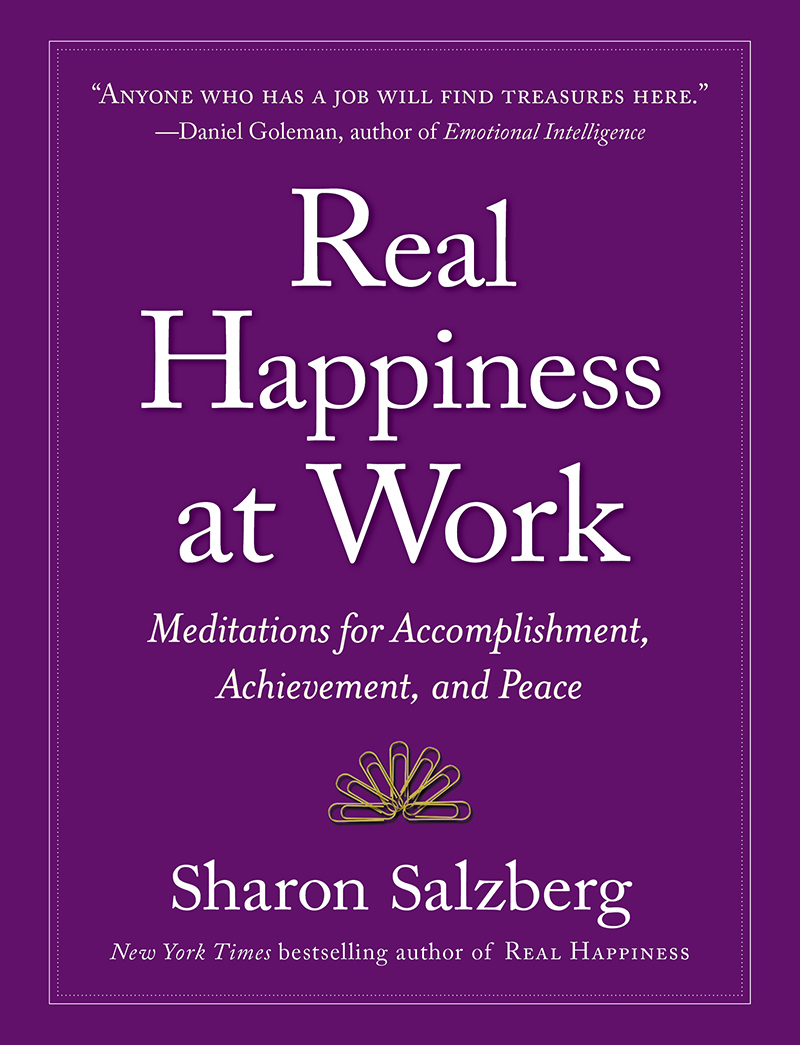Real Happiness at Work
Meditations for Accomplishment, Achievement, and Peace
Sharon Salzberg
Workman Publishing New York
Acknowledgments
Books (or at least my books) seem to be born of a collective effort. For inspiration, exertion, encouragement, and clarity Id like to thank Joy Harris, Bob Miller, Mark Matousek, Mary Ellen ONeill, Ambika Cooper, and the many people who so openly told me their stories of work, whether full of happiness or not so much.
Mirabai Bush, Lesley Booker, Maia Duerr, Mudita Nisker, Dan Clurman, Ellen Carton, and Kristin Neff generously offered exercises and reflections that have been tested and refined through their own years of work helping people be clearer and happier.
Many years ago, Margaret Wheatley helped change the way I viewed organizations. Ive been moved, too, by her latest work and the inclusion of the distress, even despair, many feel at work.
Diana Rose, cofounder of the Garrison Institute, with creativity and generosity, created and sustained a program bringing yoga and meditation to domestic violence shelter workers, which opened up my understanding of resilience (and enabled me to meet some really extraordinary women).
Books by Dan Goleman, Michael Carroll, and Chade-Meng Tan have greatly enhanced the application of mindfulness to the workplace.
My gratitude to the staff and members of New York Insight who created a forum for exploring issues of happiness at work, and Betty Rogers and the people who gathered in DC to help me continue that exploration.
Aijen Poo, director of the National Domestic Workers Alliance and the codirector of Caring Across Generations, is an inspiration. Her work is a reminder that respecting the dignity of all is the basis for a society to move forward in justice and in love.
And a nod to my own small meditation group, within which a variety of interesting and challenging jobs are represented. You all give new meaning to Keep calm and carry on.
Contents
Introduction
When you took the job that you have now, did you hope it would make you happy? Did you anticipate having a connection with your coworkers? How about the work itself? Did you imagine yours would be an occupation that would complement your life outside of work and mesh in a way that felt unique and rewarding?
If so, perhaps youve been surprisedor even disappointed. While some people are fortunate enough to love what they do for a living, the majority of people with jobs face challenges on a regular basis that undermine their ability to be happy at work.
Hannah is a thirty-two-year-old secretary at a consulting firm where competition, subterfuge, and resentment prevail. She describes the office as a place where the loudest, most underhanded person wins.
Peter is a thirty-five-year-old social worker who enjoys helping people get healthy but feels increasingly burned out by the extent of his workload. Hes having a difficult time separating himself from the pain of the people hes helping and is suffering from an escalating sense of helplessness and hopelessness.
Louise is a forty-year-old police officer who doesnt know how to separate herself from the aggression her job stirs up inside her. To get through her adrenaline-charged days, she tries to compartmentalize the anger and fear that come with the job, but then finds herself taking it out on her husband and children when she goes home.
Grappling with issues of work and happiness brings up many important questions: Is it possibleor even wise to tryto be happy at jobs we dont like? Can we really maintain our peace of mind in hectic environments filled with uncertainty? Can we find a skillful way to deal with times when we have tried hard to make a difference, yet feel ineffectual or exhausted? Might the quality of our leadership expand through restoring our own deeper happiness?
The answer to all of the above is yes. There are pragmatic tools at our disposal for becoming more productive, satisfied, and peaceful at work. I believe that foremost among these tools is the practice of meditation. For nearly forty years, Ive taught techniques of concentration, mindfulness, and compassion meditations to thousands of people around the world. They have included groups of creative entrepreneurs, schoolteachers, police officers, artists, scientists, army chaplains and medics, doctors, nurses, firefighters, frontline workers in domestic violence shelters, as well as financial executives. People using meditation for greater happiness come from every walk of life, ethnic background, and belief tradition.
Through meditation, we can come to understand work problems as a potential source of achieving greater clarity, rather than as obstacles without redeeming value, and begin to recognize the true potential of the challenges that work brings our way. Although many people experience work as a burden, or worse, it is also a place where we can learn and grow and come to be much happier. In the words of teacher and former executive Michael Carroll, Maybe problems arise at work not as interruptions or intrusions, but as invitations to gain real wisdom.
Adults who work full time spend more of their waking hours at work than anywhere else, and Americans spend more hours per year at work than citizens of any other nation in the world. It can be difficult to keep from confusing our core sense of ourselves with the role we play at work, but clarity about this is critical to our peace of mind.
How we approach work thats not always fascinating and manage our time and emotions to counterbalance stress and cope with disappointments is intrinsic to finding meaning in our work world. We discover that it is possible to be competitive without being crueland committed without being consumed. Even in a job climate where being fired is a real and present danger, we have the power to improve our work lives immeasurably through awareness, compassion, patience, and ingenuity.
As I listened to peoples storiesstudents, friends, and researchers on the subject of worka few common unhappiness themes began to emerge: burnout and the need for greater resilience; time management and excessive hours or demands; questionable moral practices or challenges to personal integrity; feelings of losing a sense of purpose and the need for deeper, more durable meaning; condescension by superiors who do not listen and show a lack of compassion in decision making; boredom, distraction, and ineffectual multitasking due to a lack of concentration; the longing for creativity, surprise, variety, and a more open awareness fostering flexibility and change; and, finally, the desire to understand their work environment from a more open perspective.
These observations are about what is missing for so many, but they help clarify what is needed. They led me to consider the ideas that would begin to resolve those issues, and I identified what I think of as the eight pillars.
Each chapter in this book is named for one of these pillars and concludes with a series of meditations and exercises to try. The meditations are a pragmatic guide to a range of optionsit is worth experimenting with them to see what you want to continue with. Even if you are reading a later chapter, you might wish to go back to earlier meditations to reexperience them on a deeper level. By the time you reach the end of the book, you will have an array of tools for cultivating greater stability, openness, and fulfillment while working.




